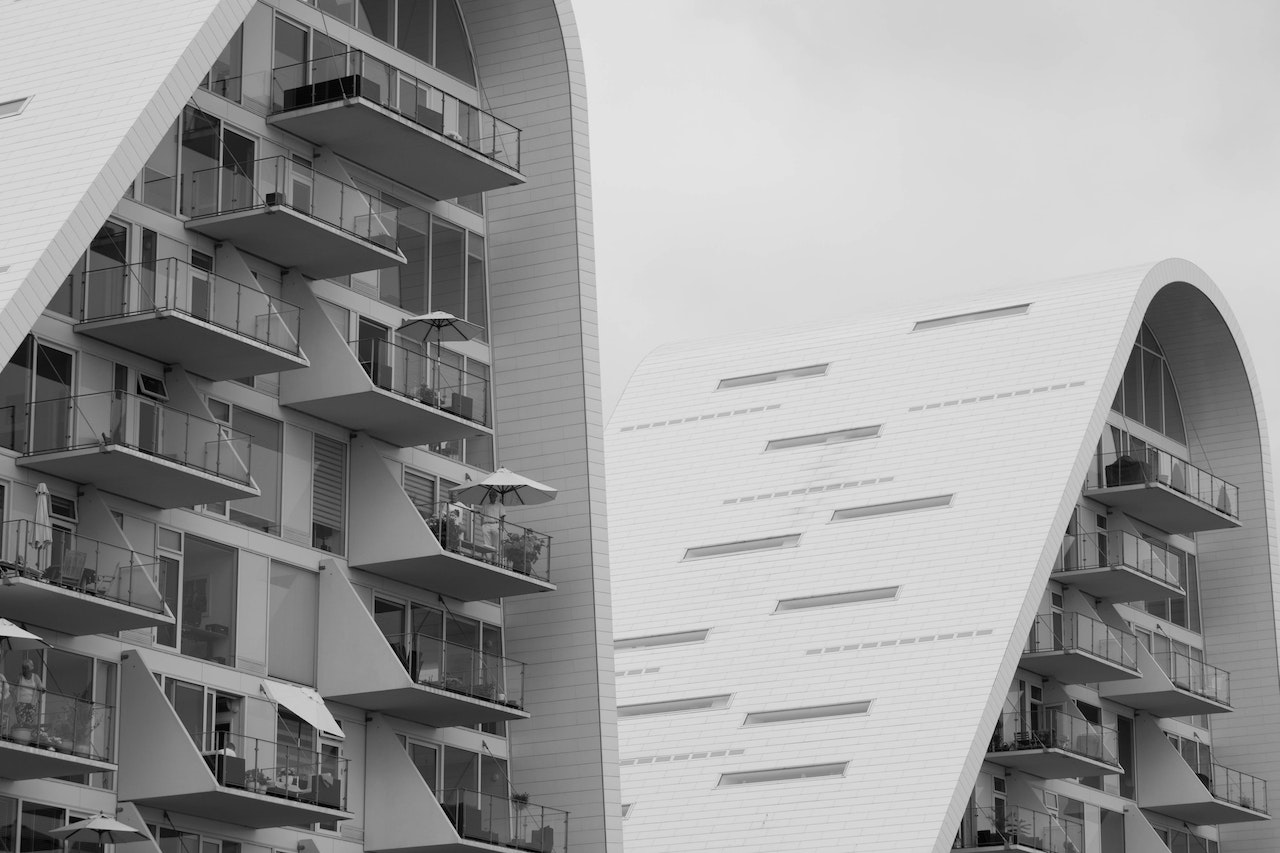The Impact Of Climate Change On Architecture And Construction - Building A Sustainable Future
Architecture has always been an industry that has responded to the needs of society and the environment. Today, the impact of climate change on architecture is more pressing than ever. The changing climate is challenging architects to create buildings that are more sustainable, resilient, and energy-efficient.
Author:George EvansMar 01, 202334.2K Shares900.3K Views

Architecture has always been an industry that has responded to the needs of society and the environment. Today, the impact of climate change on architectureis more pressing than ever.
The changing climate is challenging architects to create buildings that are more sustainable, resilient, and energy-efficient. In this article, we will explore how climate change is affecting architecture and how architects are responding to this challenge.
The first way that climate change is affecting architecture is through the need for buildings to be more energy-efficient. Rising temperatures, increased frequency of natural disasters, and the growing global population are putting more pressure on the world's energy systems.
As a result, architects are being asked to design buildings that are more energy-efficient, reducing the building's carbon footprint and reducing the energy demand.
This can be achieved through the use of high-performance insulation, energy-efficient windows and doors, and the use of renewable energy sources such as solar and wind power.
The second way that climate change is affecting architecture is through the need for buildings to be more resilient. Natural disasters such as hurricanes, floods, and earthquakes are becoming more frequent and intense.
This is requiring architects to design buildings that are better able to withstand the impact of these events. This can be achieved through the use of materials that are more durable, such as concrete and steel, and by using design strategies that help buildings resist damage from strong winds, heavy rain, and earthquakes.
The Impact Of Climate Change On Architecture
Architecture is a critical component of our built environment and is central to addressing the global challenge of climate change.
With changing weather patterns, rising temperatures, and increased frequency of natural disasters, architects are faced with the task of designing buildings that are more sustainable, resilient, and energy-efficient.
Energy Efficiency
One of the most significant ways that climate change is affecting architecture is through the need for buildings to be more energy-efficient. With the growing global population and increased demand for energy, it is more important than ever for buildings to be designed to reduce energy consumption.
Architects are being asked to use high-performance insulation, energy-efficient windows and doors, and renewable energy sources such as solar and wind power to reduce the building's carbon footprint and energy demand.
Resilience
The changing climate is also increasing the frequency and intensity of natural disasters, such as hurricanes, floods, and earthquakes. This is leading to a greater need for buildings to be more resilient.
Architects are being challenged to design buildings that are better able to withstand the impact of these events, using durable materials such as concrete and steel and incorporating design strategies that help buildings resist damage from strong winds, heavy rain, and earthquakes.
Sustainability
As the global population grows, so does the demand for resources such as energy, water, and materials. Climate change is highlighting the need for buildings to be more sustainable, reducing the use of resources and reducing waste.
Architects are being asked to design buildings that use water and energy more efficiently and to incorporate environmentally friendly materials such as bamboo and recycled materials into their designs.
Green Roofs And Walls
One response to the challenge of climate change in architecture is the use of green roofs and walls.
These areas of vegetation on the roof or walls of a building can help reduce the amount of heat absorbed by the building, improving energy efficiency and air quality. They also provide habitats for wildlife and help to reduce the urban heat island effect.
Biophilic Design
Another way that architects are responding to the challenge of climate change is through the use of biophilic design. This design approach seeks to connect people with nature in the built environment, using natural materials and incorporating elements of nature such as light, greenery, and water.
Biophilic design has been shown to improve the well-being of building occupants and reduce stress and improve mental health.
Innovative Technologies
Finally, architects are using innovative technologies such as building information modeling (BIM) and computer-aided design (CAD) software to respond to the challenge of climate change.
These tools allow architects to analyze and optimize the energy performance of a building before it is built, ensuring that it is as energy-efficient as possible and reducing its carbon footprint.
Climate Factors Affecting Building Design
The design of buildings is heavily influenced by climate factors such as temperature, humidity, wind, and rainfall patterns. Architects must consider these factors when designing buildings to ensure that they are comfortable for inhabitants and provide protection from the elements.
Climate change is altering these patterns, making it increasingly important for architects to design buildings that are responsive to changing conditions.
Impact Of Climate Change On The Construction Industry
Climate change is one of the most significant challenges facing the world today, and its impact is far-reaching, affecting various industries, including the construction industry.
The construction industry is responsible for a significant portion of greenhouse gas emissions, making it essential to address its impact on the environment.
Architects and construction professionals must work together to create buildings that are energy-efficient, resilient, and sustainable, reducing the industry's impact on the environment and helping to mitigate the effects of climate change.
Rising Costs
One of the ways that climate change is affecting the construction industry is through rising costs. Natural disasters, such as hurricanes, floods, and earthquakes, are becoming more frequent and intense, causing damage to buildings and infrastructure.
This increased frequency of natural disasters is causing construction costs to rise, as builders must incorporate more resilient designstrategies and materials into their projects.

How architecture can fight climate change | Michelle Xuereb | TEDxToronto
Shift Towards Sustainable Construction
Another impact of climate change on the construction industry is the shift toward sustainable construction practices.
Architects and builders are being asked to design and construct more energy-efficient buildings, using materials that have a low carbon footprint and incorporating features such as green roofs, rainwater harvesting systems, and renewable energy sources.
These practices help to reduce the industry's impact on the environment and create more sustainable buildings for future generations.
People Also Ask
How Does Climate Change Affect Architecture?
Climate change affects architecture by changing weather patterns, rising temperatures, and increasing the frequency of natural disasters. This challenges architects to design buildings that are more sustainable, resilient, and energy-efficient to respond to these changing conditions.
What Are The Climate Factors Affecting Building Design?
Climate factors that affect building design include temperature, humidity, wind, and rainfall patterns. Architects must consider these factors when designing buildings to ensure they provide comfort and protection from the elements.
How Is The Construction Industry Affected By Climate Change?
Climate change is affecting the construction industry by causing rising costs due to natural disasters, driving the shift towards sustainable construction practices, and driving innovation in construction technology.
What Role Can Architects Play In Addressing The Impact Of Climate Change On Architecture?
Architects play a critical role in addressing the impact of climate change on architecture by designing buildings that are more energy-efficient, resilient, and sustainable. They must stay up-to-date on the latest design strategies and technologies to ensure that buildings can respond to changing conditions.
Conclusion
The impact of climate change on architecture is a significant challenge facing the world today. As weather patterns, temperatures, and natural disasters change, it is increasingly important for architects to design buildings that are more sustainable, resilient, and energy-efficient.
The construction industry must respond by adopting sustainable construction practices and incorporating the latest technologies and materials to reduce its impact on the environment and help mitigate the effects of climate change.
By working together, architects, builders, and construction professionals can play a critical role in addressing this challenge and creating a more sustainable future.

George Evans
Author
George Anderson, an exceptional architectural designer, envisions and brings to life structures that transcend the realm of imagination. With an unwavering passion for design and an innate eye for detail, George seamlessly blends form and function, creating immersive spaces that inspire awe.
Driven by a deep appreciation for the interplay of space, light, and materials, George's innovative approach redefines the possibilities of architectural design. His visionary compositions leave an indelible mark, evoking a sense of wonder and transforming the built environment.
George Anderson's transformative designs and unwavering dedication continue to shape the architectural landscape, pushing the boundaries of what is possible and inspiring generations to come.
Latest Articles
Popular Articles
